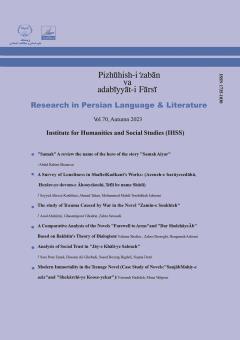Grotesque is a concept and attitude in art and literature to which some features are assigned such as contradiction, horrifying, marvelous, abnormal, ridiculous and some how tasteless, grudge, disgust, and so on. A theme or subject that due to being unfamiliar, and stra
More
Grotesque is a concept and attitude in art and literature to which some features are assigned such as contradiction, horrifying, marvelous, abnormal, ridiculous and some how tasteless, grudge, disgust, and so on. A theme or subject that due to being unfamiliar, and strange, or because of excessive exaggeration and amazement evokes an obscure or confusing feeling in the audience or transfer controversial concepts and feelings to the audience. The Genghis attack, the Mongol dynasty, and its consequences paved the way for the genesis of grotesque concepts and images of this era. In this research, in addition to introducing grotesque, some of its instances and evidences are studied in one of the most important historical- literary works of the Mongol era. The results show that the section on the history of Mongols and Ilkhanate in Jami' al-tawarikh includes such unreasonable, uneven narratives, and superstitious affairs about Mongols that accepting them as the history is so difficult. It seems that the author was obliged to hypocrisy, flattery and recording some extreme and unacceptable issues - which can be called grotesque.
Manuscript profile


